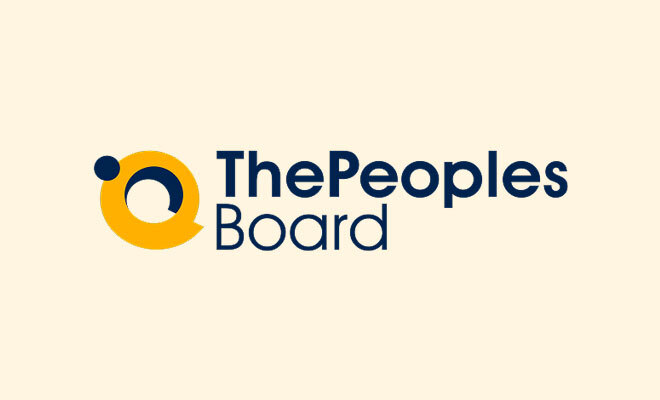Onboarding is a critical phase for any new employee. It is the process where fresh recruits familiarize themselves with their role, team, and company culture, which is crucial for their success as an employee. For Indian businesses, where workplace dynamics are influenced by diverse cultures, hierarchical structures, and evolving industries, effective onboarding can make or break an employee’s experience.
Feedback is a vital but often overlooked aspect of onboarding. Providing constructive and timely onboarding feedback ensures new hires feel supported, confident, and aligned with organizational expectations.
Let’s delve into how feedback can be effectively incorporated into the onboarding process for Indian companies.
Definition of Employee Onboarding
Employee onboarding is the process of integrating new employees into an organization, providing them with the necessary knowledge, skills, and behaviors to become effective members of the team. It involves a series of activities and programs designed to equip new hires with the tools and resources they need to succeed in their roles. From understanding the company’s mission to mastering their specific job functions, onboarding is a comprehensive journey that sets the foundation for a new hire’s future success.
Importance of Onboarding Feedback
Feedback during onboarding serves several purposes:
- Clarity: It helps employees understand their performance and areas of improvement early on.
- Engagement: Employees who receive regular feedback are more likely to feel valued and connected to the organization.
- Alignment: It ensures that new hires are on the right track and understand their role in achieving organizational goals.
- Retention: Constructive feedback minimizes feelings of uncertainty and boosts confidence, reducing early turnover rates.
Onboarding surveys are a key tool in gathering this feedback, helping to identify areas for improvement and ensuring new hires feel supported.
Goals of Employee Onboarding
The primary goals of employee onboarding are multifaceted. Firstly, it aims to provide new employees with a positive and engaging experience, ensuring they feel welcomed and valued from day one. Secondly, it equips new hires with the necessary knowledge, skills, and behaviors to perform their jobs effectively.
Additionally, onboarding integrates new employees into the organization’s culture and values, helping them understand and align with the company’s mission. Setting clear expectations and goals for new employees is also crucial, as it provides direction and purpose. Lastly, fostering a sense of belonging and engagement among new employees is essential for long-term retention and satisfaction.
Overview of the Onboarding Process
The onboarding process typically includes several key stages:
- Pre-onboarding: This stage begins before the new employee’s first day and includes activities such as sending welcome packets, setting up equipment, and scheduling meetings. It’s about making the new hire feel anticipated and prepared.
- Onboarding: This stage encompasses the new employee’s first day and the initial weeks of employment. During this period, they receive training, meet with colleagues, and begin to learn about the organization’s culture and values. It’s a critical time for building relationships and understanding the company’s operations.
- Post-onboarding: This stage occurs after the initial onboarding period and includes ongoing training, feedback, and support to help new employees continue to grow and develop in their roles. Continuous development and support ensure that new hires remain engaged and productive.
Steps to Provide Onboarding Feedback
During the onboarding process, it is important to provide actionable feedback while ensuring that the new hires do not get overwhelmed.

Set Clear Expectations from the Start
Before providing feedback, ensure the new hire knows what is expected. Establish clear guidelines and how the company functions to make their stay in the company smoother. Having a clear set of questions to ask during this phase can help ensure that new hires understand their roles and responsibilities.
During the initial onboarding phase:
- Share job descriptions and responsibilities in detail.
- Outline performance metrics or critical deliverables for the first 30, 60, and 90 days.
- Communicate organizational values and cultural norms.
A clear understanding of expectations helps employees contextualize feedback and work toward improvement.
Build a Feedback-Friendly Culture
Feedback should be seen as a tool for growth, not criticism. Ensure that the new hires are aware of the reasons behind the feedback during the onboarding process. To foster a positive mindset:
- Encourage Open Communication: Assure employees that feedback is a two-way process.
- Normalize Feedback: Include feedback discussions as a regular part of onboarding check-ins.
- Train Managers: Equip supervisors and mentors with the skills to provide constructive feedback.
Employee onboarding surveys can be an effective tool in promoting open communication and gathering valuable feedback from new hires.
In Indian workplaces, where hierarchical systems often dominate, it’s essential to emphasize that feedback is not a critique of the individual but a step towards mutual success.
Use the Feedback Sandwich Approach
The feedback sandwich involves starting with positive feedback, addressing areas of improvement, and closing with encouragement. This approach ensures:
- Employees feel appreciated for what they’re doing well.
- Improvement points are communicated without being overly critical.
- New hires remain motivated to grow.
For example:
- Start: “Your ability to quickly grasp the project requirements has been impressive.”
- Improvement: “One area to focus on could be time management to meet deadlines more effectively.”
- Close: “I’m confident that with your skills, you’ll excel with a bit more focus on prioritization.”
Schedule Regular Feedback Sessions
Feedback should be ongoing, not a one-time event. Implement structured feedback intervals during the onboarding period:
- Week 1: Provide feedback on how the employee settles into the role and the organization.
- Month 1: Review progress on initial tasks and their understanding of responsibilities.
- Month 3: Conduct a comprehensive review, discussing achievements and long-term goals.
During these sessions, ask specific questions like, “Do you feel supported in your role?” or “Do you understand your job responsibilities clearly?”
This consistent feedback ensures employees stay on track and feel supported throughout onboarding. It also helps in keeping track of the effectiveness of the onboarding process.
Use Technology for Feedback During the Onboarding Process
In India, where companies often deal with large workforces, especially in the IT and manufacturing sectors, technology can streamline the feedback process:
- Employee onboarding tools like Zoho People, Keka, or Darwinbox, popular in India, can track performance of the new employees and provide real-time feedback.
- Implement feedback surveys through platforms like SurveyMonkey or Google Forms to gather insights from new hires about their onboarding experience.
Using technology can streamline an employee onboarding process, making it more efficient and effective.
Through employee onboarding survey questions, you can assess the experience of the new hires to make the process much smoother in the future. The two-way communication allows you to make the onboarding process more effective and creates an environment that makes the employees feel heard.
Make Feedback Actionable
Feedback without a clear path for improvement can leave new employees confused or demotivated. Ensure your feedback includes:
- Specific Examples: Avoid generic statements like “You need to improve.” Instead, say, “In the last client meeting, focusing on summarizing key points could make your presentation clearer.”
- Suggestions for Improvement: Offer practical advice or resources to help them improve.
- Follow-Up Plans: Schedule a follow-up to review progress and provide further guidance.
Asking the right questions to new hires can help ensure that feedback is specific and actionable.
Encourage Peer Feedback for New Hires
Involving peers in the feedback process fosters teamwork and collaboration. Assign a buddy or mentor to the new hire who can provide informal, day-to-day feedback.
Peer feedback often feels less intimidating and offers valuable insights into team dynamics. It also creates a communicative work environment and allows employees a chance to openly voice their thoughts.
Aligning Employee Onboarding Feedback with Company Goals
To ensure that employee onboarding feedback is aligned with company goals, it’s essential to take a strategic approach:
- Clearly Define Goals and Objectives: Start by clearly defining the organization’s goals and objectives. This clarity helps in setting the right expectations for new hires.
- Identify Key Performance Indicators (KPIs): Determine the KPIs that will be used to measure the success of the onboarding process. These could include metrics like time-to-productivity, employee engagement scores, and retention rates.
- Develop Tailored Survey Questions: Create employee onboarding survey questions that are tailored to the organization’s specific needs and goals. These questions should provide insights into the new hire’s experience and areas for improvement.
- Analyze Feedback Data: Regularly analyze feedback data to identify trends and areas for improvement. Use this data to make informed decisions and track progress over time.
Low-Cost Strategies for Effective Employee Onboarding Survey
Indian startups and small businesses often operate with limited resources. Here are some cost-effective ways to integrate feedback into onboarding:
- Buddy Programs: Pair new hires with experienced employees who can offer informal feedback and guidance.
- Feedback Checklists: Create simple templates for managers to track and provide feedback to new employees without investing in expensive software.
- Feedback Huddles: Organize weekly team check-ins to provide group feedback and encourage collaborative problem-solving.
Employee onboarding surveys are a cost-effective way to gather feedback and improve the onboarding process.
Following Up on Employee Feedback
Following up on employee feedback is crucial to ensure that new hires feel heard and valued. This can be done by:
- Responding Promptly: Address feedback and concerns as soon as they arise. Prompt responses show that the organization values the new hire’s input.
- Implementing Changes: Use the feedback to make necessary changes and improvements to the onboarding process. This demonstrates a commitment to continuous improvement.
- Communicating Results: Share the results of feedback with new hires and the wider organization. Transparency fosters trust and shows that the company is taking action based on the feedback received.
- Continuous Monitoring: Regularly monitor and evaluate the onboarding process to ensure it remains effective and aligned with company goals. Continuous assessment helps in maintaining a high standard of onboarding.
By following these steps, companies can create a more effective and engaging onboarding experience that aligns with their goals and supports new hires in their journey.
Best Practices for Giving Onboarding Feedback
To make onboarding feedback more effective for the company, be sure to keep the following points in mind:
- Be Timely: Provide feedback as soon as possible to ensure it’s relevant and actionable.
- Focus on Behavior, Not Personality: Address specific actions or results rather than making personal comments.
- Balance Positivity and Constructive Criticism: Too much criticism can demotivate new employees, while only praising can create complacency.
- Be Empathetic: Understand that new hires are adjusting and may need time to improve.
Benefits of Providing Onboarding Feedback
After implementing positive feedback sessions in the onboarding process, you will easily be able to observe the benefits that it brings. This can include:
- Faster Adaptation: New hires adjust to their roles and the company culture more quickly with regular feedback. This allows them to become a seamless part of the company’s workforce at an accelerated rate.
- Increased Confidence: Constructive feedback boosts self-assurance and motivates employees to perform better. A confident employee is much more likely to take initiative in their work and communicate their ideas.
- Stronger Employee-Employer Relationships: A feedback-driven onboarding process builds trust and demonstrates that the organization values employee growth. It makes the new employees feel valued and keeps them engaged with the company.
- Reduced Turnover: Employees who receive support during onboarding are less likely to leave prematurely.
Conclusion
Onboarding feedback is essential in preparing new employees for success. For businesses with diverse workforces and unique challenges, a structured feedback approach ensures employees feel valued and aligned with organizational goals.
Companies can create a seamless onboarding experience by fostering a feedback-friendly culture, using actionable and timely communication, and leveraging cost-effective strategies. Remember, onboarding isn’t just about welcoming employees—it’s about empowering them to thrive.
Investing time and effort into feedback during onboarding pays off in the form of engaged, confident, and productive employees who contribute to the company’s long-term success.






